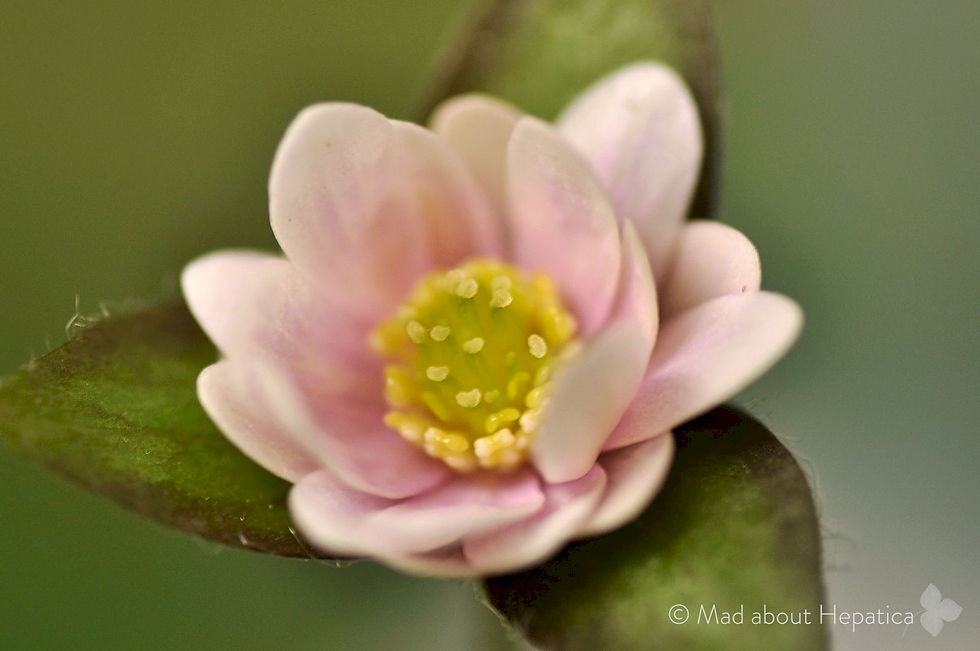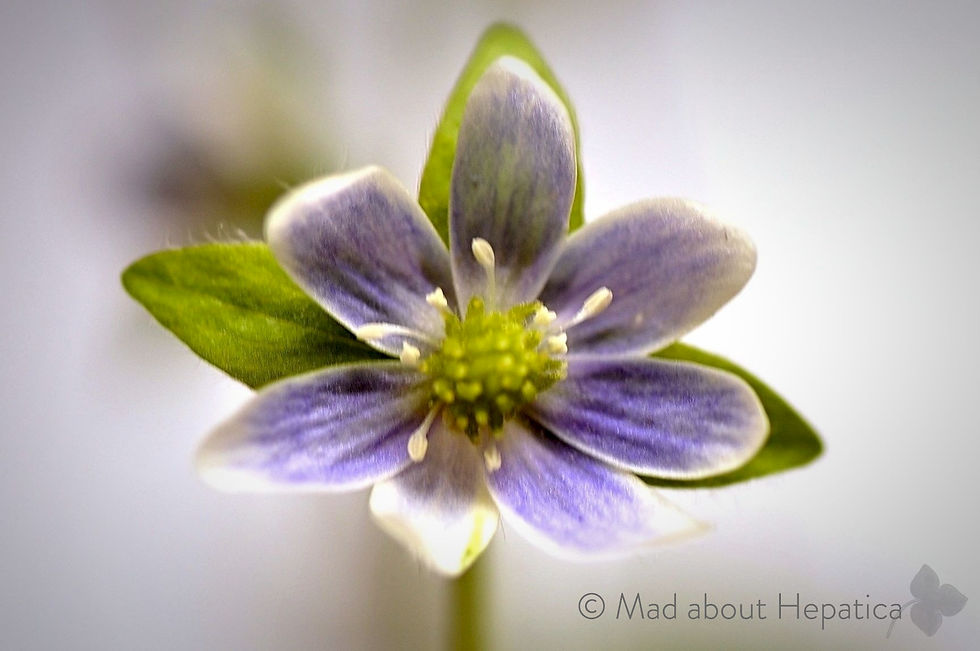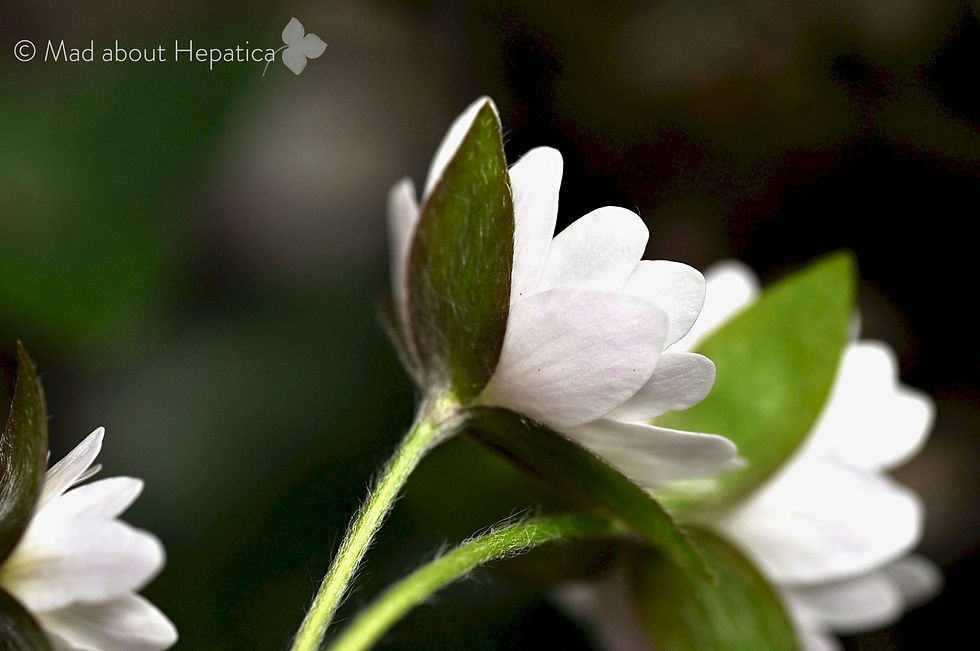
North American Native Hepatica Project

'Why, sometimes I’ve believed as many as six impossible things before breakfast.'
The North American Hepatica species are some of the most interesting to me of the Hepatica genus. I have been working with these two species (H. acutiloba and H. americana) for more than a decade and have been continuously observing them and comparing them with other Hepatica species to see how they grow in our local environment. What truly interests me most about them is their potential.
I am always amazed at the diversity of our North American Hepatica. Every year, I see at least one picture of a full-double-flowered sharp-lobed hepatica found in nature, as well as many pictures of flowers in many beautiful colors, from white to lavender to blue to pink, with various shades and even bi-colored ones as well. Yet it is very rare to see any nursery propagated Hepatica acutiloba in specific colors or specific forms, when there would be so many people interested in them were they available.
Currently, there are no domestic nurseries working on North American Hepatica species in any concentrated way. Certainly, no nursery in the United States has gone so far as to breed and select for several generations to see just how many interesting forms and color variations could be created. Even though recently the understanding of how to create double flowers or certain colors and forms in Hepatica is widespread, and European and Japanese breeders and nurseries are successfully breeding them, no double H. acutiloba or H. americana has ever been created to this point. Perhaps because of the time constraints involved, since it takes at least three or four years to propagate Hepatica acutiloba and Hepatica americana from seed to bloom, and closer to ten years to create full double flowers from seed, many nurseries may not consider it feasible from a business perspective. In addition, the fact that Hepatica is not an easy plant if you have never grown it from seed could be a factor.
However, I believe that the importance of this lies not only in its horticulture value, but also as a method of conservation. The numbers of Hepatica in the wild are declining, and even just growing North American Hepatica from seeds can help to protect the local plant populations from ongoing encroachment and the effects of climate change.
Therefore, it is my intention to continue to explore the American hepatica species in more depth, especially since (as can be seen by the many interesting examples created by pollinators to be found in nature) the potential rewards in terms of exciting colors and forms for focused controlled breeding efforts are endless.
I have been very lucky to have friends who have been helping me during my endeavors by providing me with plant material, seeds, and pollen, and I very much appreciate their many important contributions to this project. Hopefully, more Hepatica enthusiasts and growers out there will continue to share their own knowledge and to work together so that we will be able to keep enjoying our native Hepaticas in the wild as well as in our gardens for a long time to come.
More pics of my Sharp-lobed Hepatica are available to see here and Round-lobed Hepatica are here.
More updates about my North American Hepatica can be seen in my journal.
Some of My Seedlings





